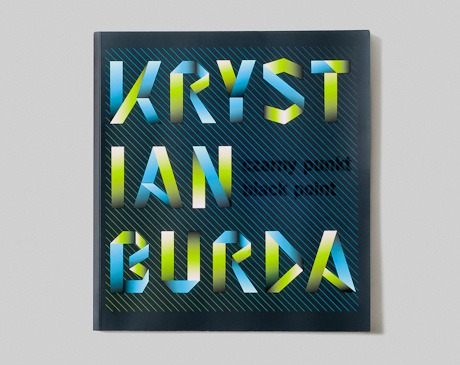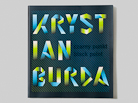Krystian's Burda catalogue ‘Black point’

year of publication: 2010
size: 23 × 25 cm
124 pages
edition: 500 pieces
binding: paperback
reproductions in colour
languages: Polish/English
graphic design and laying out: Katarzyna Goczoł, Jan Piechota, Magdalena Piwkowska
publisher: BWA Contemporary Art Gallery in Katowice
ISBN 978-83-88254-58-1
Contents:
Biography
‘In search of rythm and space’ Bożena Kowalska
‘Clearing-up exercises’ Marta Lisok
‘The road to Żelazowa Wola’ Krystian Burda
Lookin for the fourth dimension throuh art’ Roman Lewandowski talks with Krystian Burda
Oscar Hansen's letter for Krystian Burda
Works
Price: 15 zł (about 4 euro)
Visit our bookshop or order by e-mail:
ksiegarnia@bwa.katowice.pl

Krystian Burda — black point — monographic exhibition Krystian Burda was born on June 20th, 1935 in Rydułtowy. He took his first courses of drawing and sculpting as a twelve-year old pupil of L. Konarzewski,...

It is the first publication which is meant to be an exhaustive monograph of this artist. The catalogue contains a comprehensive presentation of the artist's works, as well as texts which expound their genesis and context.
‘(…) Krystian Burda’s art is of scientological character and, what’s often related to this, it is articulated with the language of geometry. The artist treats very rigorously the principle of rational justification for all uses of forms and colours. There is no place for intuitive, subconscious or accidental actions in his creation. He describes his way of creating art as a calculative one. The form patterns in his works have to be logically arranged and harmonious. The colour, treated sparingly, is only of informative character, however not in the sense of any culturally accepted permanent symbols of meanings or a determined psychological influence. The information concerns only the arrangement of colour forms in space. It’s the colour what to a large extent puts them closer of farer, dividing or blending them into a unity, and determining the vectors of movement. Burda makes us aware how essential it can be. He recalls a relation of his friend who, coming back from the United States, told him about a bridge, the pavement of which was a kind of optical raster. The drivers have been forced to limit the speed, because the shimmering of the raster network disabled the proper perception of the surroundings and the direction of driving. To delete its destructive action it would be enough to dominate the raster structure with a blending visual element. The road signs restricting the speed were put instead.’
Bożena Kowalska
‘In search of rythm and space’
fragment




